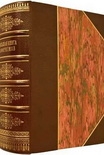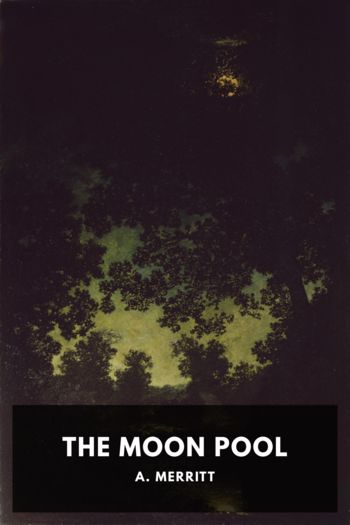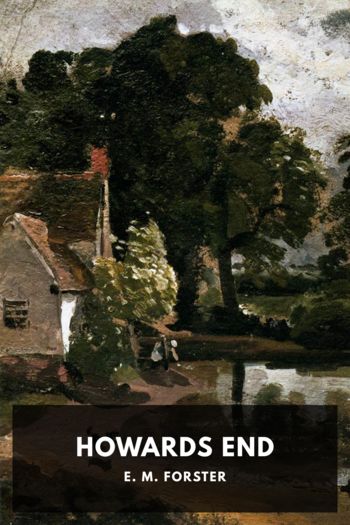How to Become a Witch, Amber K. [new books to read .txt] 📗

- Author: Amber K.
Book online «How to Become a Witch, Amber K. [new books to read .txt] 📗». Author Amber K.
Your divination. Sometimes the tarot cards or runes help us see consequences that we would otherwise overlook.
Your inner bell, or gut instinct. If it feels wrong, it probably is. Keep looking for a better way.
In the end, it’s about responsibility to yourself and others. You have to make the hard choices, and the buck stops with you. You can’t excuse yourself by saying, “I was ordered to do it” or “So-and-so (a person, institution, or law) said it was all right”—not if you’re a Witch.
The Eight-line Rede
The Rede has not only an eight-word version but also an eight-line version. Many Witches like that it includes the ideal of “perfect love and perfect trust,” as well as the Rule of Three, or Threefold Law, as explained further on. (There is also a very poetic version that is longer still, written by Adriana Porter as a gift to the Craft decades ago. You can find it in appendix E.)
Bide the Wiccan Law ye must,
In perfect love, in perfect trust.
Eight words the Wiccan Rede fulfill:
An ye harm none, do as ye will.
And ever mind the Rule of Three:
What ye send out comes back to thee.
Follow this with mind and heart,
And merry ye meet, and merry ye part!
The Ordains
Traditional Laws of the Craft
The eight-line version of the Rede begins with “Bide the Wiccan Law ye must.” What law is this? The Rede itself is “only” advice or counsel, even though it is taken extremely seriously by most Witches.
The “Law” refers to the Ordains, or Ardaynes, a rather mysterious list of laws whose origin has been lost. The version that seems oldest has 162 sections, most of which comment on coven operation and the correct uses of magick. It is written in archaic-sounding language and includes words that have left common usage such as “skith” (harm), “bales” (technically, evils or sorrows; in context, probably dangerous herbs), “apies” (opiates), and “appenage” (land, revenues, or property in general). Yet some of the phrasing sounds suspiciously modern as well.
There are a few clues as to its time of origin. One phrase says, “in some future time…the persecution may die and we may worship our gods in safety again.” This, and the emphasis on secrecy and discussions of Witch-hunting and torture, imply that it was written during a time of persecution, i.e., roughly the period 1400–1700 CE. But another section mentions that “in England and Scotland, ’tis now many a year since a Witch hath died the death,” so perhaps it is post–Burning Times. Perhaps some parts are old, and other parts are much newer.
Whatever its origin, most of it seems applicable today. Because Wicca is a folk religion and has never claimed to have the revealed word of God, most Witches don’t care where the Ordains came from as long as they are consistent with the spirit of the Craft and work well. The late Lady Galadriel wrote an updated version that is very well received by many modern Witches, A New Wiccan Book of the Law (Grove of the Unicorn, Moonstone Publications, P.O. Box 13384, Atlanta, GA 30324, USA or through http://www.abaxion.com/bbb7.htm). An even simpler, more modernized version can be found in appendix A-2 of CovenCraft: Witchcraft for Three or More (Llewellyn, 1999).
Following are some key ideas from the Ordains:
It violates the Ordains to reveal anyone as a Witch. Every member of the Craft has the right to decide whether or not he or she will be “in the broom closet.”
We are forbidden to boast or threaten, much less use magick to harm others. Any of these could bring attention or persecution to the Craft. The Craft must be preserved.
If the community agrees, we can use magick to bind others from doing harm, but that’s the most we can do when using magick to influence others.
We cannot use magick to harm others, but above and beyond that, we must oppose anyone who works evil magick and depose any leader who has violated the Law.
We do not take money for doing magick, period. It is done freely or not at all.
There’s nothing wrong with magick for your own benefit—say, for healing or protection or prosperity—as long as it is really needed and no one is harmed. But it must be debated and endorsed by the coven if there is any doubt.
In conflict between Witches, the laws of the Craft and the leaders of the Craft are to be used to resolve the dispute. Taking an issue to public courts can only harm the Craft (unless someone’s safety is threatened, such as in domestic abuse). If the people involved are from different covens or solitary, they can agree to arbitration by respected elders.
The Ordains have the weight of tradition and common sense behind them. If they didn’t work in the real world, Witches would ignore them. But they contain a great deal of wisdom and are honored by most who know them.
The Need for Informed Consent
As a guideline, we assume that unwanted interference in a person’s life may constitute harm. Thus, for example, we do not perform magick for an individual unless they request it—or give their informed consent.
If Aunt Molly is ill, we might think, “Oh, I’ll do some healing magick for her.” Not without her consent! Her body may need that illness for reasons we don’t understand—to cleanse toxins from her system, to force her to get some rest, to enable her to get love and attention. So we may offer healing magick but not proceed without her understanding and permission.
About the only exceptions to this rule are magickal workings for your children and magick to defend yourself. Because you have responsibility for your child until they come of age, and you presumably have more wisdom or experience than they do, you are allowed to set rules for them—and perform magick if you feel it’s in their best interest.





Comments (0)